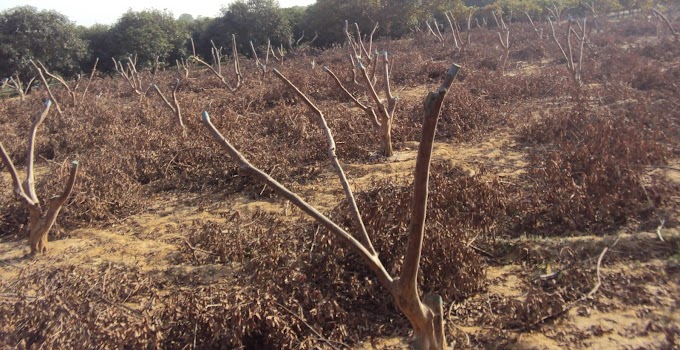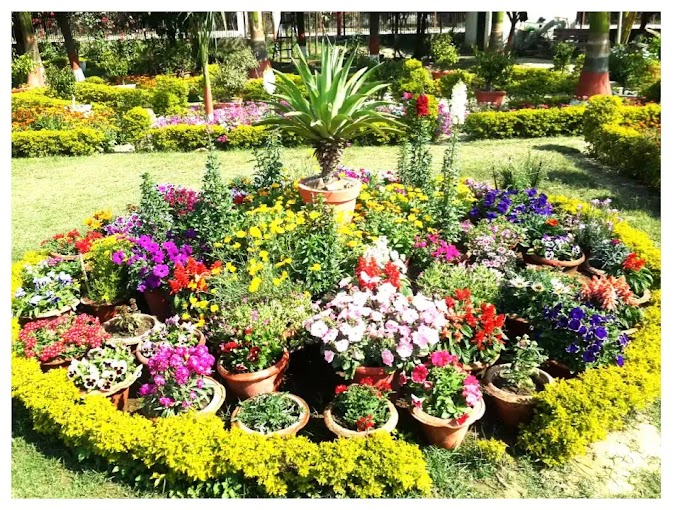Production site: Ethylene is produced
in bacteria, fungus, alga, moss, gymnosperms and higher plants. All parts of higher
plants produce ethylene but production is higher in the tissues of meristematic,
senescence, ripening and wounding regions. The climacteric fruits produce higher
concentration of ethylene during their ripening whereas in non-climacteric
fruit ethylene production is quite low.
Biosynthesis: Ethylene
is biosynthesized from sulfur containing essential amino acid methionine:
The ethylene biosynthesis process involves three steps:
In
first step ATP (AdenosineTri-Phosphate) activates methionine and S-Adenosyl
Methionine (SAM) is synthesized from methionine in the process SAM synthetase
enzyme involves.
Under
second step SAM cleaves into 1-amino cyclopropane-1- carboxylic acid (ACC) and
5-methyl thioadenosine in the presence of
catalyzing enzyme ACC synthase that also
requires cofactor pyrodoxal phosphate. In
the process, ACC also conjugates to form N-malonyl ACC which is
storage form of ethylene. The ACC synthesis regulates the ethylene production
and the factors which accelerate or slow the ACC synthase activity also
affecting the level of ethylene production accordingly. The ACC synthase (ACS)
activity is directly proportional to the ethylene production rate. Regulation
of ACS activity plays a key role in the
rate of ethylene biosynthesis. The malonylation
of ACC regulates the level of ACC and thereby production of ethylene.
In
the third step,
ACC is oxidized into ethylene, Co2,
and HCN in the presence of ACC oxidase enzyme which is also called ethylene
forming enzyme (EFE). Further, HCN
converts into formic acid and ammonia. The ascorbate and Fe++ are
required for ACC oxidase activity and the ACC oxidation takes place in the presence of light and O2. The
ripening and wounding promote ACC oxidase
activity while Co++,Cu++
and Zn++ inhibit the activity. The further synthesis of methionine
continues from 5 methyl thioadenosine produced during SAM cleaving.
The
ACC synthesis increases with the high
concentration of Indole Acetic Acid (IAA) and cytokinins while ACC synthase is
inhibited by abscisic acid. Environmental factors like floods, drought,
chilling, physical injury and pathogen attack induce
ethylene formation in plants. Under floods,
roots deprive to sufficient oxygen that results
in the synthesis of ACC which is
translocated from roots to leaves and oxidized into leaves resulting ethylene
biosynthesis. The ethylene synthesis increases with temperature up to 350C
and decreases with a decrease in
temperature up to 0-20C. Low concentration of O2 also inhibits
ethylene synthesis.
Factors affecting biosynthesis
Oxygen: the biosynthesis
of ethylene includes oxidation of aminocyclopropane carboxylic acid (ACC) that
requires oxygen; therefore the anaerobic conditions inhibit ethylene biosynthesis
in plant tissues although methionine a precursor of ethylene is available in
the tissues. The wax coating or storage of climacteric fruits into low O2
atmosphere delays the ripening of the fruits because the low availability of O2 prevents the
conversion of ACC to ethylene which accelerates fruit ripening and senescence.
Temperature:
The optimum range of temperature requires for ethylene biosynthesis but the
range varies with plant species. The 300C temperature is optimum in
apple for ethylene production. Normally temperature beyond the optimum range
increases in the ethylene biosynthesis. The ethylene production increases many folds
in the plant which is first exposed to chilling temperature thereafter higher
temperature in comparison to the plant exposed constantly to a higher temperature.
Stress: The biotic and
abiotic stresses increase ethylene production in plants. The ethylene
production increases in the plants under the stress caused by insects and parts
damage, bacterial fungal and viral diseases, drought, water logging, higher
temperature and physical injury to the plant tissues because under stress the
synthesis of enzyme ACC synthase is increased leading more synthesis of ACC
that subsequently oxidized to ethylene. The pineapple plants flower early and
coleus leaves abscise faster when these plants are placed horizontally than in vertical
position because of more ethylene production in a horizontal position.
Light: It is reported
that ethylene biosynthesis is increased in dark in the seedlings of a pea, similarly light inhibited the ethylene
production in wheat leaves. Light decreases the ACC with a corresponding increase in the MACC (Malonyl ACC)
which is biologically inactive. The CO2 increases the ethylene
biosynthesis at low concentration whereas it inhibits ethylene action at very
higher concentration. In the dark CO2 accumulates in the tissues and
promotes ethylene biosynthesis.
Plant Growth regulators:
The higher biosynthesis of ethylene in those sites of plants where auxin
concentration remains higher indicates the effect
of auxin on ethylene production. Auxin increases the ethylene biosynthesis by
enhancing the conversion rate of S-adenosylmethionine (SAM) to ACC. Removal of
the site of auxin biosynthesis like
apical bud or application of TIBA (2,3,5-Tri iodobenzoic
acid ) an antagonist of auxin reduces the ethylene production. The synthetic
auxins NAA and IBA are effective for a longer
period to produce ethylene than natural auxin IAA. Similar to auxin;
Gibberellins and Cytokinins are also reported to increase the ethylene biosynthesis.
The ethrel or ethaphon when applied releases ethylene without the involvement of enzymes. The ethrel molecule contains CH2=CH2
group and structurally resembles
methionine a precursor of ethylene.








